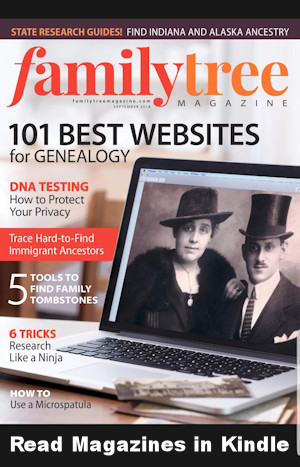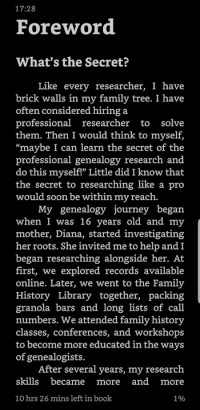As an avid ebook and audio book reader, I’m often asked about ebooks. The question of how to read and find ebooks is more complex than it sounds. For me, it is combination of the following questions:
- What device should I use to read ebooks?
- If I find an ebook online, how to I read it in an ebook reader?
- Where do I find ebooks online (free and paid)?
Let’s take these one by one.
What device should you use to read ebooks?
In the good old early days of ebooks, there weren’t many choices. You either used a proprietary ebook reader device, or read them in a web browser. Today we have choices, so which should you choose?
As with most personal use items, you choose the system that works for you and your needs.
If you have a smartphone or tablet, start there. If you are an Amazon user, install the Kindle app and begin the process of searching and buying books and magazines. There are over a million titles to choose from with new ones coming out every day, and many magazines, including family history and genealogy magazines, you can subscribe to and read on Kindle apps and devices. Kindle can also read PDF, DOC, HTML, MOBI, and TEXT files by simply opening the file on your device from within Kindle’s app, or you can email files to your Kindle Library using a unique email set up by Amazon Kindle. Today’s apps make the process simple and easy – a little too easy for my pocketbook.
If you are a serious reader, then consider the Kindle Unlimited book program. For USD $9.99 a month you can read as much as you wish from among the more than a million titles and audiobooks on the Kindle Unlimited program. You can check out up to 9 books at any time and read them on any Kindle device or app.
 Some people prefer to have one device just for reading. There are small sized tablets (notes), Nook, and Kindle devices. While the Kindle devices have some added benefits such as read-out-loud included, I recommend that you invest in tablet as it offers more options and flexibility. Kindle’s app will install on just about every type of tablet or phone, even on your desktop computer.
Some people prefer to have one device just for reading. There are small sized tablets (notes), Nook, and Kindle devices. While the Kindle devices have some added benefits such as read-out-loud included, I recommend that you invest in tablet as it offers more options and flexibility. Kindle’s app will install on just about every type of tablet or phone, even on your desktop computer.
If you are not a fan of Amazon, or wish to read on something not Kindle, there are many book reader apps to choose from. My favorites for Android are Aldiko Book Reader, Cool Reader, and Moon+ Reader. Remember, these ebook readers do not access nor read proprietary Amazon or Kindle books, only books either downloaded free or purchased elsewhere.
For reading on a PC or Mac, I like Calibre, a powerful ebook manager, reader, and file converter.
Check out the lists of recommended ebook readers on Lifehack, TechRadar, and Make Tech Easier’s recommendations for iOS.
 Once you have chosen an ebook reader, set it up to match your needs. The more comfortable your reading environment, the more likely you are to use it.
Once you have chosen an ebook reader, set it up to match your needs. The more comfortable your reading environment, the more likely you are to use it.
As I get older, I prefer larger font sizes. Some people find reading serif fonts easier than sans serif or the other way around. I also prefer reading white text on a black screen.
When reading on Aldiko, Cool Reader, and Moon+Reader, I experiment with the settings for auto page turning and scrolling to match my reading speed.
Check with your ebook reader on how to customize your reading experience.
How to read an ebook file in an ebook reader?
You’ve downloaded an ebook file from one of the many free ebook sources I’ve listed below. Now what?
An ebook is a file that can be read by a computerized device such as an ebook reader, tablet, smartphone, computer, and web browser. The key to reading an ebook is matching the file type with the ebook reader.
The most common ebook file types are PDF, Daisy, Doc, EPUB, HTML (browser), MOBI, RTF, and TEXT, besides Kindle’s proprietary file formats. When you hunt for books online, match the file format with the ebook reader’s ability to read it. For example:
| Ebook Reader | File Formats | |
|---|---|---|
| Kindle | PDF, TEXT, DOC, MOBI, PRC, AZW, KF8, KFX | |
| Aldiko | PDF, TEXT, MOBI, HTML, RTF, FB2, PRC, ODT, DBR, CBZ, LIT (non-DRM book formats) | |
| Moon+ | TXT, HTML, EPUB, PDF, MOBI, UMD, FB2, CHM, CBR, CBZ, RAR, ZIP, OPDS | |
| Calibre | TXT, TXTZ, PDF, EPUB, DOC, DOCX, MOBI, HTML, RFT, PRC, AZW, AZW3, AZW4, CBZ, CBR, CBC, CHM, DJVU, FB2, FBZ, HTMLZ, LIT, LRF, ODT, PRC, PDB, PML, RB, SNB, TCR |
If a file isn’t in the right format for your ebook reader or device, Calibre and other tools are available online for converting ebook files from one format to another, except for copyright protected and proprietary files.
Check the following for more information on ebook reader readers and file formats.
- Comparison of Android e-reader software – Wikipedia
- Comparison of e-book formats – Wikipedia
- Lifewire – Supported E-Book and File Formats for Various E-Readers
Also, check out Kindlepreneur’s tips on how to get free ebooks legitimately. It takes a little tech savvy, but once set up, easy to reproduce.
Where to Find Ebooks to Read?
There are many free and paid ebook sources online.
For Kindle and Nook users, start with the store built right into your app or device. They list free and paid books as well as easy access to audiobooks.
For free books, here is a quick list to help you get started. Note, some sites require registration or offer a combination of free or paid books.
- Project Gutenberg
- Internet Archive: Digital Library of Free Books
- The Online Books Page by the University of Pennsylvania
- Calibre – Open books
- International Digital Children’s Library
- Library Genesis
- ManyBooks
- Heritage Quest (requires library membership access)
- Authorama
- Free Classic Books Online at Classic Reader
- Feedbooks
- Library if the Getty Research Institute
- The Literature Network
- PDFBooksWorld
- Read Print
- The UNZ Review: An Alternative Media Selection
- WorldCat
- Wikibooks
- Wikisource
- Open Library
- Google eBookstore
- Bibliomania
- Forgotten Books
- Rakuten Kobo
- Overdrive
- Questia Public Library
Some of the above sources of free and open source books include specific categories for genealogy such as the genealogy collection at Archives.org, which includes Family Genealogy, New York Passenger and Crew Vessel Lists from 1897-1957, US Passport Applications from 1795-1905, and a variety of war records.
If you are seeking strictly genealogy books, start with Cyndi’s List of books, ebooks, and online books.
In 2015, FamilySearch announced they’d added their 200,000th book to their online collection called books.FamilySearch.org. Working with the Allen County (Indiana) Public Library and other libraries and genealogical societies and libraries, the work of many volunteers continues. Today, you can find more than 350,000 digitized genealogy and family history books, collections, and publications from Allen County Public Library, American Fork Library, Arizona State Library, BYU, Houston Public Library, and more.
Here is a short list of other resources for books on genealogy and family history:
- Free Genealogy E-books, Templates and Chart Downloads – Family Tree
- Free History and Genealogy Books Online
- BYU Family History Archive
- Genealogy Book Search
- Free Genealogy eBooks | Ancestral Findings
- 10 Free Genealogy Downloads | The Armchair Genealogist
Don’t forget that your local library is a great starting point for finding free books, in print and via digital download or access through their apps. Check your library for specific instructions and guides.
Amazon’s Kindle Store includes tons of free books, but finding them is often a challenge. Family History Daily offers search tips to ensure you open those digital archives in Amazon in pursuit of free books.
LibriVox is a site offering free audiobooks, including classics and out-of-print books, easily listened to through any MP3 player app or audio book app.
Fairly regularly, I will be publishing posts on various public domain books and book sources for genealogy and family history research and studies. Stay tuned for updates!
On a person note: If you are a published author and you haven’t converted your book to an ebook or audiobook, so do now. Don’t wait. You are missing out on amazing sale opportunities. The decision to purchase a book today is often based upon availability of a digital and/or audio book as well as print. Many buy one of each format, including myself. This allows me to read the printed book in a comfortable space, take the ebook with me on the road to lighten the load, and listen while driving or doing something else. It’s a lifestyle.
Kindle’s CreateSpace makes it simple and easy, and the process and tools to shift the book from print to digital are free and easy to use. If you can use Microsoft Word or Pages, you can create a digital version of your book.


